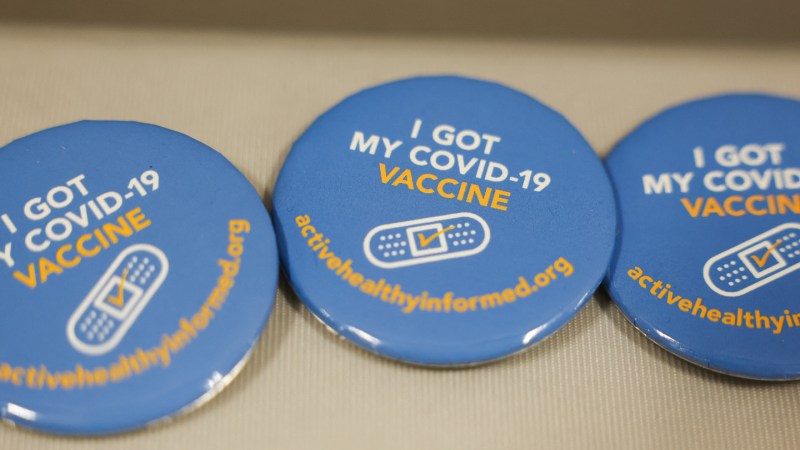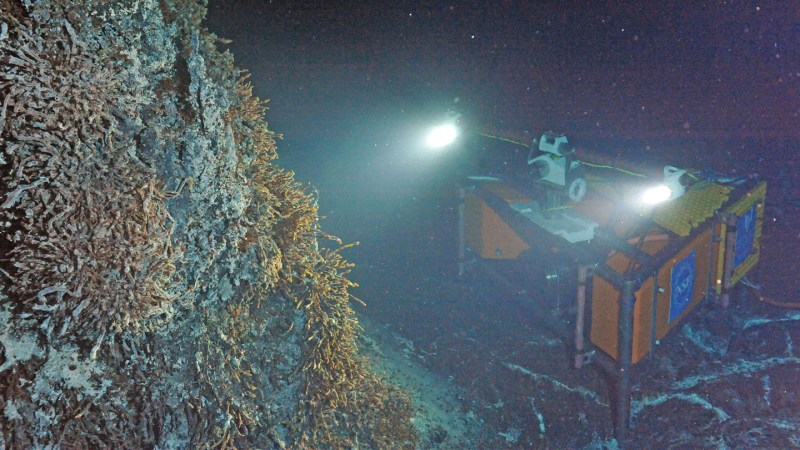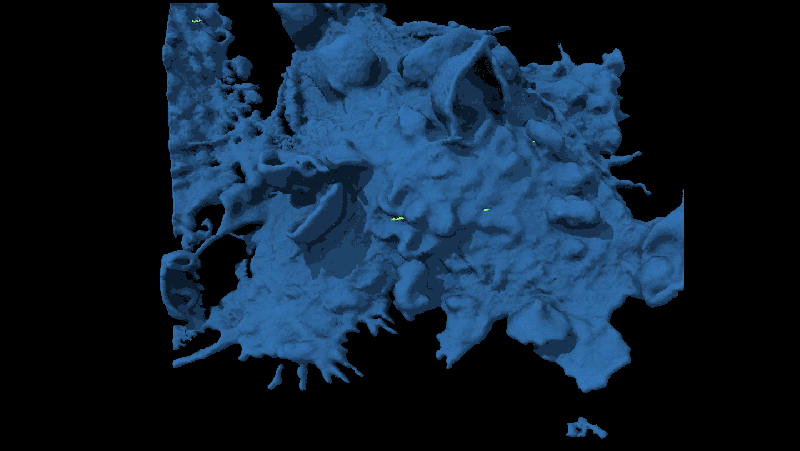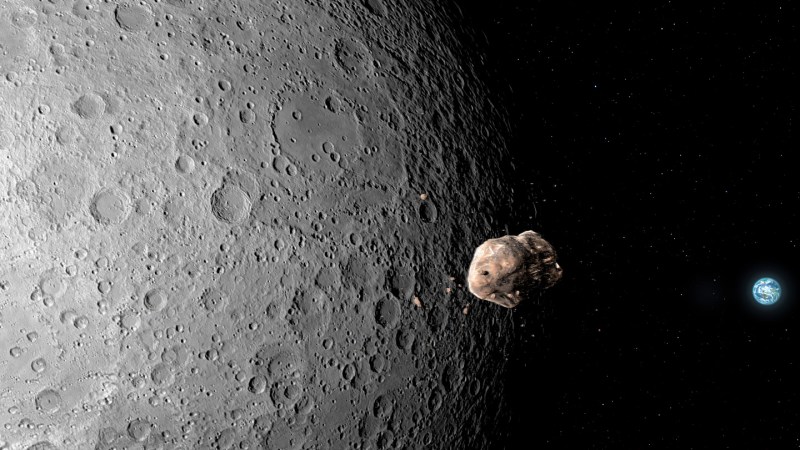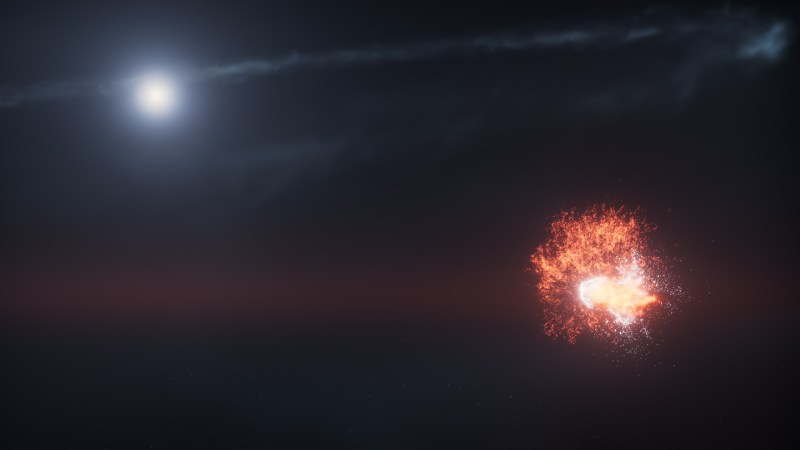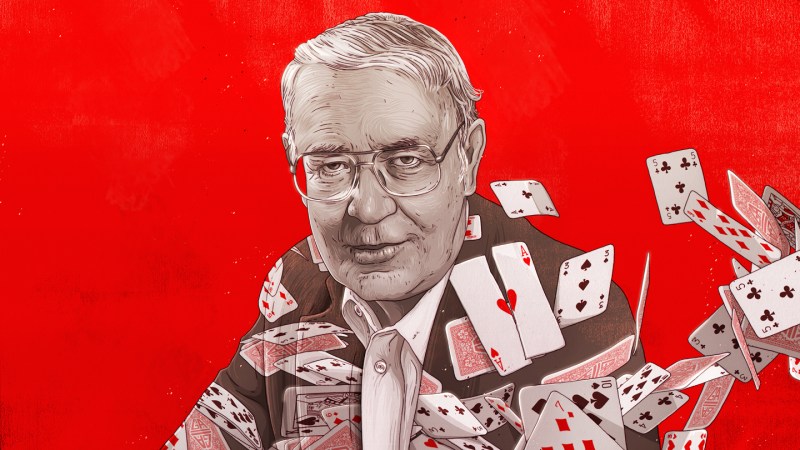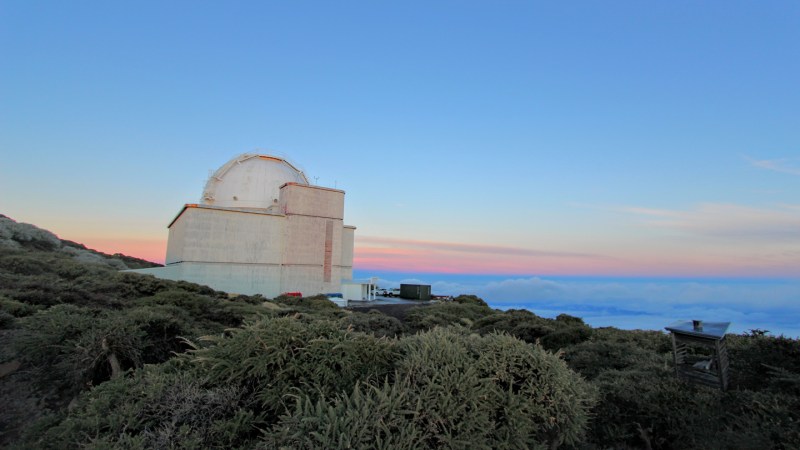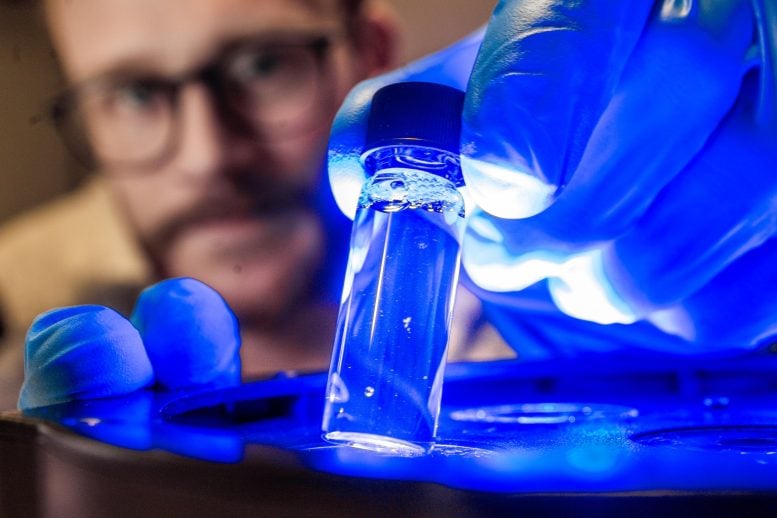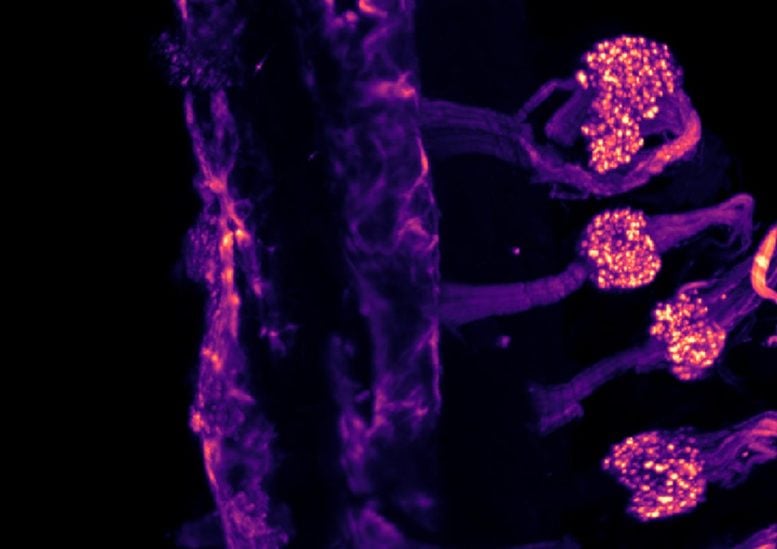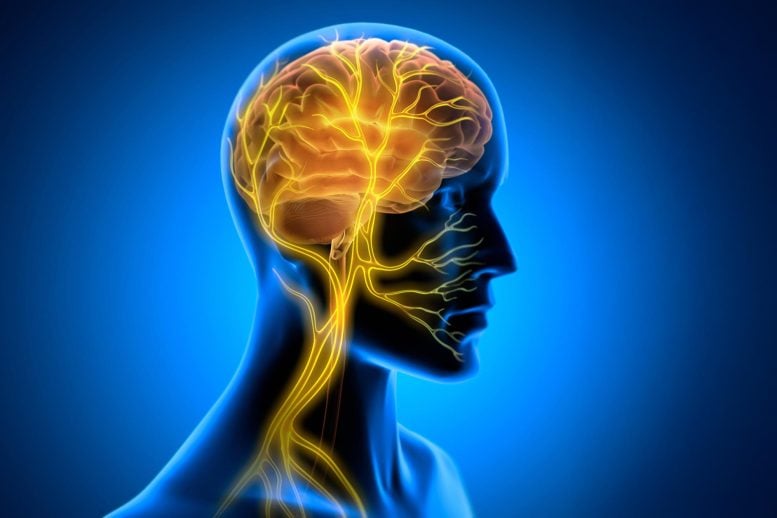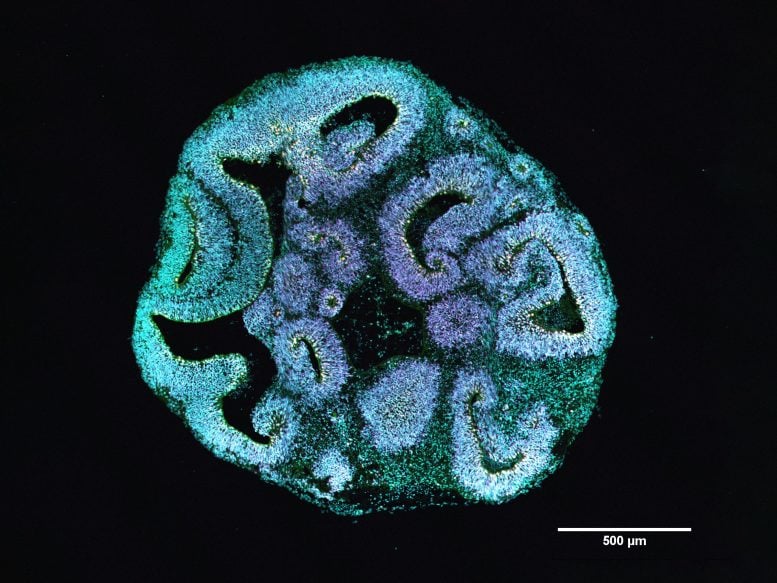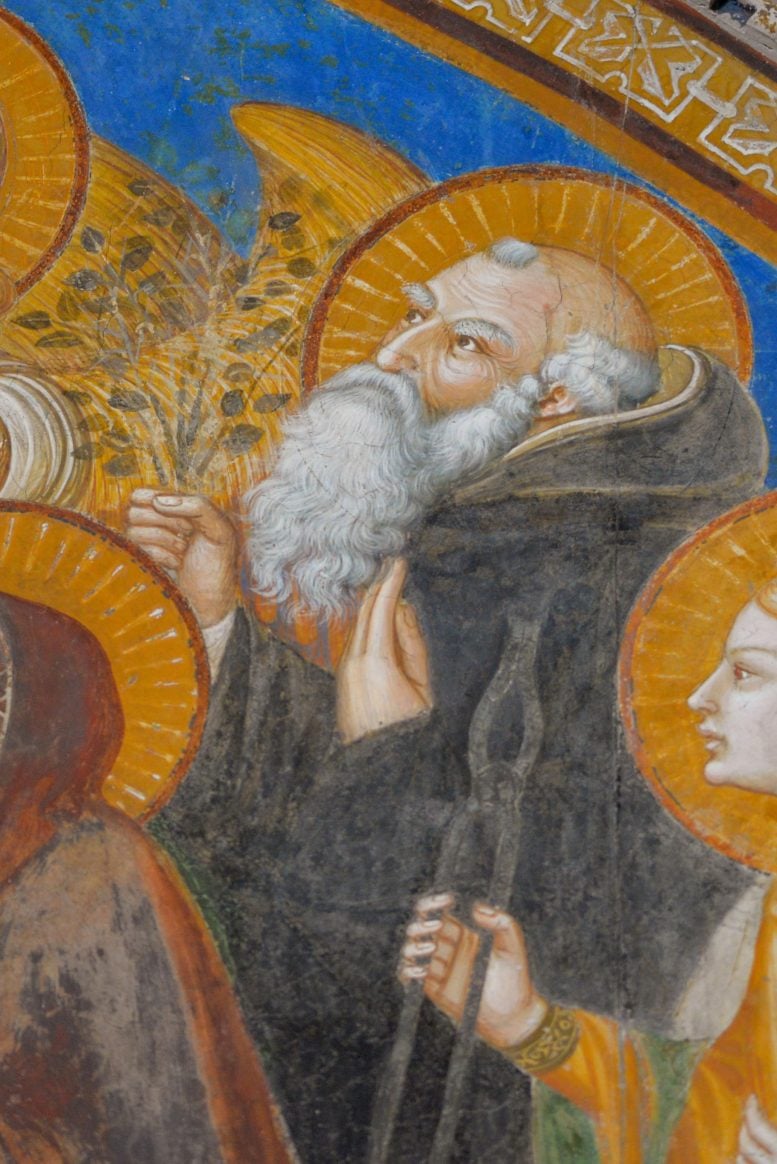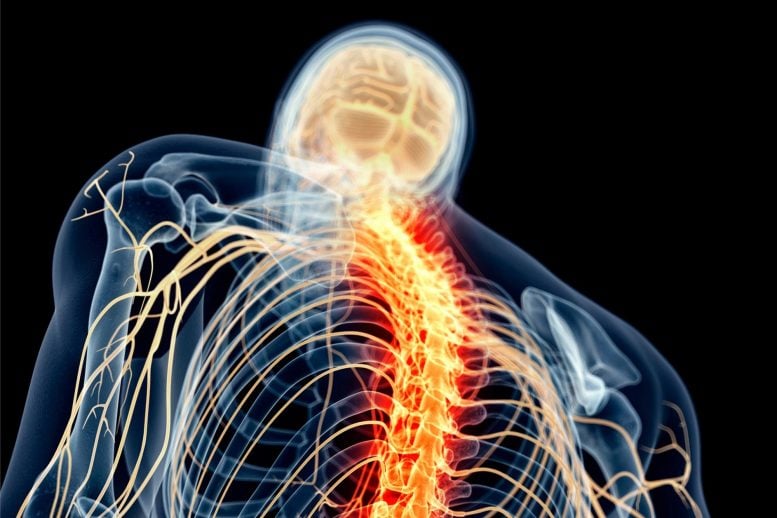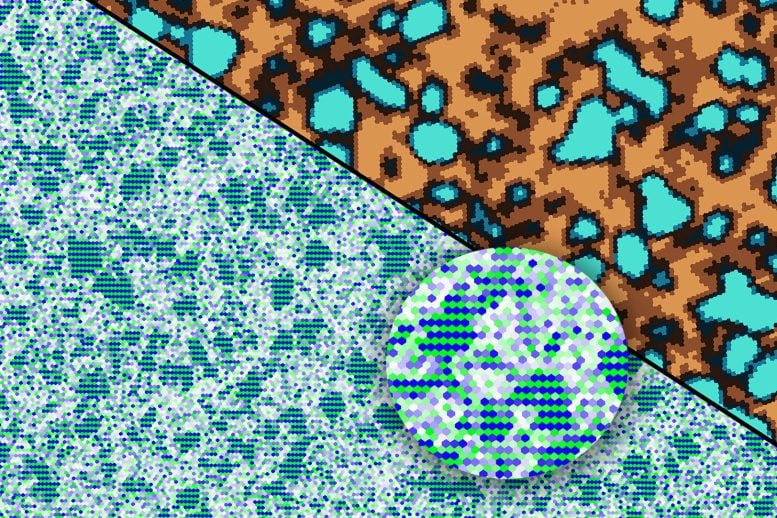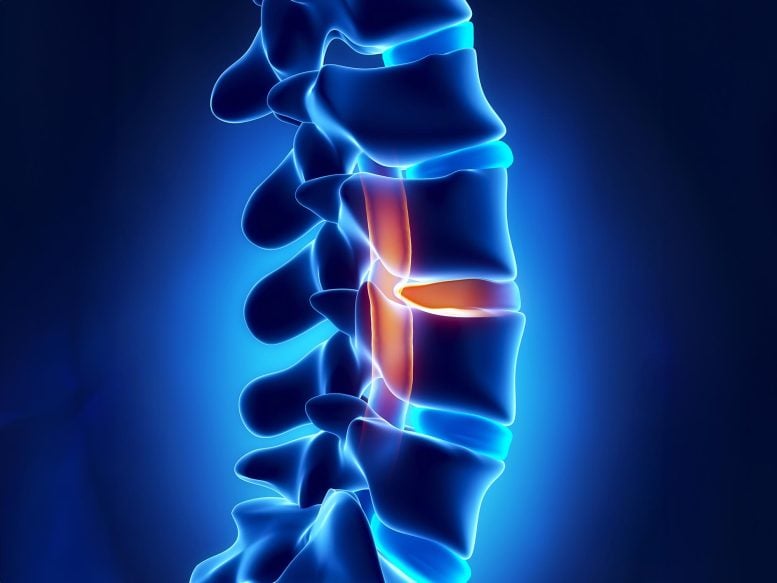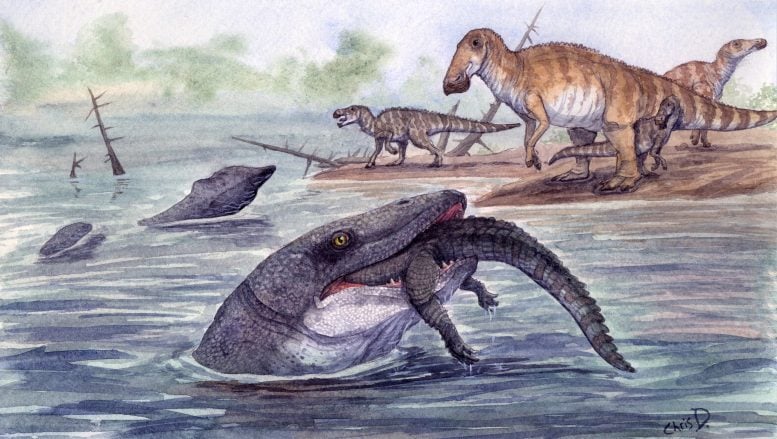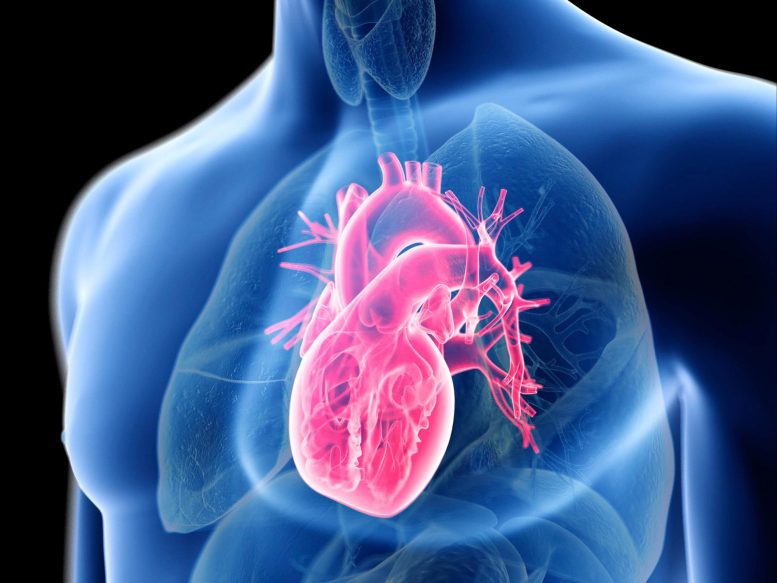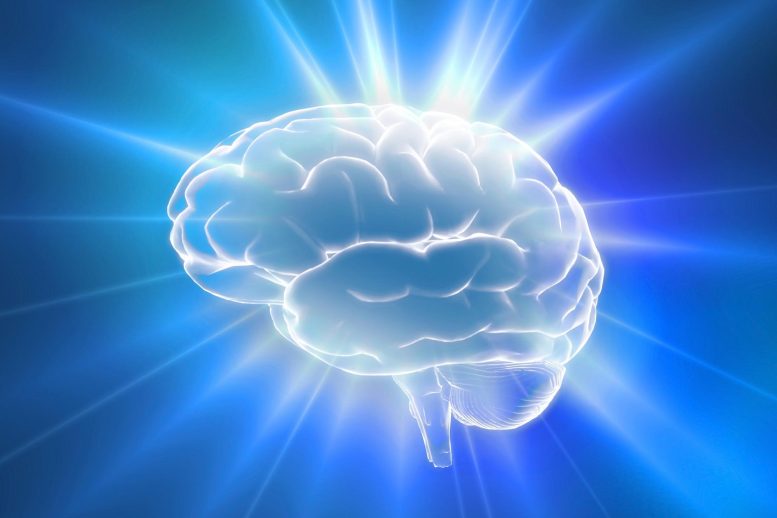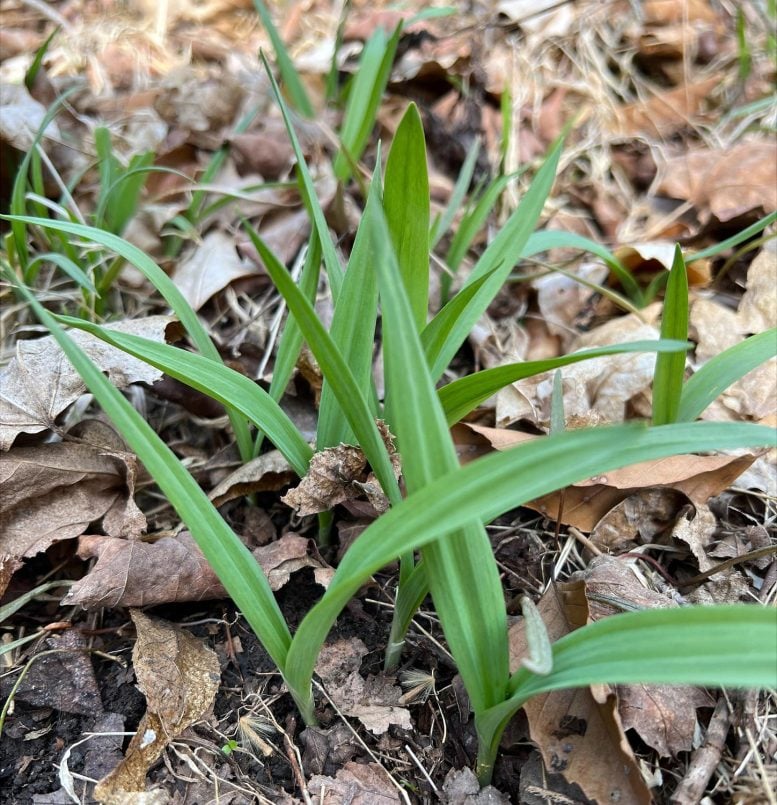Editor in Chief Nancy Shute talks about life’s complexities, from its evolution on Earth as a single cell to complex human behavior.
Your account has been suspended. Please update your subscription plan at rss.app. - (KD843mj8YEDbLDRX)
Your account has been suspended. Please update your subscription plan at rss.app. - (ntzUwlR6zaTflwXQ)
A new study suggests that dementia may be driven in part by faulty blood flow in the brain. Researchers found that losing a key lipid causes blood vessels to become…
Scientists are digging into the hidden makeup of carbon-rich asteroids to see whether they could one day fuel space exploration—or even be mined for valuable resources. By analyzing rare meteorites…
A new eco-friendly technology can capture and destroy PFAS, the dangerous “forever chemicals” found worldwide in water. The material works hundreds to thousands of times faster and more efficiently than…
A major evolutionary theory says most genetic changes don’t really matter, but new evidence suggests that’s not true. Researchers found that helpful mutations happen surprisingly often. The twist is that…
What we put on our plates may matter more for the climate than we realize. Researchers found that most people, especially in wealthy countries, are exceeding a “food emissions budget”…
Alzheimer’s has long been considered irreversible, but new research challenges that assumption. Scientists discovered that severe drops in the brain’s energy supply help drive the disease—and restoring that balance can…
The familiar fight between “mind as software” and “mind as biology” may be a false choice. This work proposes biological computationalism: the idea that brains compute, but not in the…
AI writing tools are supercharging scientific productivity, with researchers posting up to 50% more papers after adopting them. The biggest beneficiaries are scientists who don’t speak English as a first…
The search for life on Earth is speeding up, not slowing down. Scientists are now identifying more than 16,000 new species each year, revealing far more biodiversity than expected across…
More than 200 years ago, Count Rumford showed that heat isn’t a mysterious substance but something you can generate endlessly through motion. That insight laid the foundation for thermodynamics, the…
Scientists studying thousands of rats discovered that gut bacteria are shaped by both personal genetics and the genetics of social partners. Some genes promote certain microbes that can spread between…
Some ants thrive by choosing numbers over strength. Instead of heavily protecting each worker, they invest fewer resources in individual armor and produce far more ants. Larger colonies then compensate…
New research suggests Alzheimer’s may start far earlier than previously thought, driven by a hidden toxic protein in the brain. Scientists found that an experimental drug, NU-9, blocks this early…
Black holes are among the most extreme objects in the universe, and now scientists can model them more accurately than ever before. By combining Einstein’s gravity with realistic behavior of…
MIT scientists have achieved the first-ever lab synthesis of verticillin A, a complex fungal compound discovered in 1970. Its delicate structure stalled chemists for decades, despite differing from related molecules…
Washing machines release massive amounts of microplastics into the environment, mostly from worn clothing fibers. Researchers at the University of Bonn have developed a new, fish-inspired filter that removes over…
Scientists exploring Romania’s Hațeg Basin have discovered one of the densest dinosaur fossil sites ever found, with bones lying almost on top of each other. The K2 site preserves thousands…
Scientists at MIT and Stanford have unveiled a promising new way to help the immune system recognize and attack cancer cells more effectively. Their strategy targets a hidden “off switch”…
When we watch someone move, get injured, or express emotion, our brain doesn’t just see it—it partially feels it. Researchers found eight body-like maps in the visual cortex that organize…
Using ultracold atoms and laser light, researchers recreated the behavior of a Josephson junction—an essential component of quantum computers and voltage standards. The appearance of Shapiro steps in this atomic…
Your eyes may reveal when your brain is working overtime. Researchers found that people blink less when trying to understand speech in noisy environments, especially during the most important moments.…
Eating full-fat cheese and cream may be associated with a lower risk of dementia, according to a large study that tracked people for more than 25 years. Those who consumed…
A new AI developed at Duke University can uncover simple, readable rules behind extremely complex systems. It studies how systems evolve over time and reduces thousands of variables into compact…
A Brazilian study has confirmed that Joseph’s Coat, a plant used for generations in folk medicine, can significantly reduce inflammation and arthritis symptoms in lab tests. Researchers observed less swelling,…
Researchers studying a massive landslide in Alaska have detected strange seasonal seismic pulses caused by water freezing and thawing in rock cracks. These faint signals could become an important early…
Astronomers have uncovered a massive hidden planet and a rare “failed star” by combining ultra-precise space data with some of the sharpest ground-based images ever taken. Using the Subaru Telescope…
A new study shows dopamine isn’t the brain’s movement “gas pedal” after all. Instead of setting speed or strength, it quietly enables movement in the background, much like oil in…
Sediments from a Roman latrine at Vindolanda show soldiers were infected with multiple intestinal parasites, including roundworm, whipworm, and Giardia — the first time Giardia has been identified in Roman…
For years, scientists thought Saturn’s moon Titan hid a global ocean beneath its frozen surface. A new look at Cassini data now suggests something very different: a thick, slushy interior…
Superconductors promise loss-free electricity, but most only work at extreme cold. Hydrogen-rich materials changed that—yet their inner workings remained hidden because they only exist under enormous pressure. Now, researchers have…
Old military air samples turned out to be a treasure trove of biological DNA, allowing scientists to track moss spores over 35 years. The results show mosses now release spores…
By studying tiny distortions in the shapes of distant galaxies, scientists mapped dark matter and dark energy across one of the largest sky surveys ever assembled. Their results back the…
Balanophora is a plant that abandoned photosynthesis long ago and now lives entirely as a parasite on tree roots, hidden in dark forest undergrowth. Scientists surveying rare populations across East…
Long before opioids flooded communities, something else was quietly changing—and it may have helped set the stage for today’s crisis. A new study finds that as church attendance dropped among…
Researchers have revealed that so-called “junk DNA” contains powerful switches that help control brain cells linked to Alzheimer’s disease. By experimentally testing nearly 1,000 DNA switches in human astrocytes, scientists…
An instrument aboard NASA’s Europa Clipper spacecraft captured rare ultraviolet observations of an interstellar comet while Earth-based telescopes were blinded by the Sun. The spacecraft’s unique position provided an unprecedented…
In a rare and historic achievement, Children’s Hospital Colorado successfully completed its first dual heart and liver transplant in a pediatric patient. The life-saving surgery was performed on 11-year-old Gracie…
After injury, the visual system can recover by growing new neural connections rather than replacing lost cells. Researchers found that surviving eye cells formed extra branches that restored communication with…
New research reveals when glaciers around the world will vanish and why every fraction of a degree of warming could decide their fate.
Scientists have discovered that T cell receptors activate through a hidden spring-like motion that had never been seen before. This breakthrough may help explain why immunotherapy works for some cancers…
Long before whales and sharks, enormous marine reptiles dominated the oceans with unmatched power. Scientists have reconstructed a 130-million-year-old marine ecosystem from Colombia and found predators operating at a food-chain…
Cosmic “touchdown airbursts” — explosions of comets or asteroids above Earth’s surface — may be far more common and destructive than previously thought, according to new research. Unlike crater-forming impacts,…
Gravitational waves from black holes may soon reveal where dark matter is hiding. A new model shows how dark matter surrounding massive black holes leaves detectable fingerprints in the waves…
A small tweak to mitochondrial energy production led to big gains in health and longevity. Mice engineered to boost a protein that helps mitochondria work more efficiently lived longer and…
Astronomers have detected spacetime itself being dragged and twisted by a spinning black hole for the first time. The discovery, seen during a star’s violent destruction, confirms a prediction made…
A new bioluminescent tool allows neurons to glow on their own, letting scientists track brain activity without harmful lasers or fading signals. The advance makes it possible to watch individual…
Researchers announced over 70 new species in a single year, including bizarre insects, ancient dinosaurs, rare mammals, and deep-river fish. Many were found not in the wild, but in museum…
Much of the western U.S. is overdue for wildfire, with decades of suppression allowing fuel to build up across millions of hectares. Researchers estimate that 74% of the region is…
Researchers have uncovered that the body uses different molecular systems to sense cold in the skin versus internal organs. This explains why surface chills feel very different from cold experienced…
AI tools designed to diagnose cancer from tissue samples are quietly learning more than just disease patterns. New research shows these systems can infer patient demographics from pathology slides, leading…
NASA’s SPHEREx (Spectro-Photometer for the History of the Universe, Epoch of Reionization, and Ices Explorer) space telescope has completed its first infrared map of the entire sky in 102 colors…
This new image from ESA’s Euclid space telescope shows two large galaxies: NGC 646 and NGC 646b. The post Euclid Focuses on Visual Pair of Galaxies appeared first on Sci.News:…
University of Maryland paleontologist Thomas R. Holtz Jr. has spent decades puzzling over how dinosaurs fit into their ancient worlds -- and how those worlds differ from our own. The…
The protoplanetary disk around IRAS 23077+6707, a young star located roughly 1,000 light-years away, is unexpectedly chaotic and turbulent, with wisps of material stretching much farther above and below the…
The skeletal remains of an individual colloquially referred to as Beachy Head Woman were re-discovered in the Eastbourne Town Hall collection in 2012, and have remained the subject of significant…
Using camera traps, ornithologists have photographed a previously unknown species of jewel-babbler in the forested karst of the Southern Fold Mountains in Papua New Guinea. The post New Species of…
Researchers have found ancient gases and fluids trapped in 1.4-billion-year-old halite crystals from northern Ontario, Canada. The post Scientists Find Ancient Air Bubbles in 1.4 Billion-Year-Old Salt Crystals appeared first…
Using the WISPR (Wide-Field Imager for Solar Probe) instrument aboard NASA’s Parker Solar Probe, scientists observed the interstellar comet 3I/ATLAS from October 18 to November 5, 2025. The post NASA’s…
The Middle to Upper Paleolithic Transition approximately 50,000 to 38,000 years ago is marked by the decline and extinction of Neanderthals, the emergence and expansion of anatomically modern Homo sapiens.…
This new image from the NASA/ESA Hubble Space Telescope is one of the best ever views of Arp 4, a visual pair of galaxies in the constellation of Cetus. The…
In the 4th century BCE, at least four wooden plank boats the island of Als off the coast of Denmark. The post Archaeologists Find Fingerprint of Ancient Seafarer on 2,400-Year-Old…
Fomalhaut -- the 18th brightest star visible in night sky -- is orbited by a compact source, Fomalhaut b, which has previously been interpreted as either a dust-enshrouded exoplanet or…
Anchiornis huxleyi is a species of non-avian theropod dinosaur from the Late Jurassic Tiaojishan Formation in northeastern China The post Jurassic Dinosaur Fossils Shed Light on Evolution of Flight appeared…
Scientists using the Ultraviolet Spectrograph (UVS) instrument aboard NASA’s Europa Clipper spacecraft have observed 3I/ATLAS, only the third confirmed interstellar object ever detected entering the Solar System from beyond. The…
The data from NASA’s Cassini mission to Saturn initially led researchers to suspect a large underground ocean composed of liquid water on Titan. The post Titan Does Not Have Subsurface…
Bees are well known for their species and remarkable behavioral diversity, ranging from solitary species that nest in burrows to social species that construct highly compartmentalized nests. The post Paleontologists…
Using data gathered by a suite of space- and ground-based telescopes, astronomers have discovered AT 2024wpp, the most luminous fast blue optical transient (LFBOT) ever observed. The post Record-Breaking Cosmic…
PSR J2322-2650b, an enigmatic Jupiter-mass exoplanet orbiting the millisecond pulsar PSR J2322-2650, appears to have an exotic helium-and-carbon-dominated atmosphere unlike any ever seen before. The post Webb Detects Exotic Helium-and-Carbon-Rich…
Paleoanthropologists have examined and reconstructed DAN5, a 1.5-million-year-old fossilized skull of early Homo erectus found in Gona in the Afar region of Ethiopia. The post 1.5-Million-Year-Old Fossil Reveals New Details…
Paleontologists have unearthed a dense assemblage of dugong remains at the site of Al Maszhabiya in the Early Miocene Dam Formation of Qatar. The post Sea Cow Communities Have Engineered…
Russia is attacking Ukraine with Shahed-136-type drones every night now. Ukraine has put up additional air defences in
Nuclear bomb is a weapon that employs the energy from a nuclear reaction. Resulting radiation and the fallout
Russia’s main air-defence systems are S-300 and S-400. Those are expensive missile systems, capable of engaging all kinds
More accurately predicting periods of increased hurricane activity weeks in advance may become possible due to new research
Researchers at ETH Zurich and the Max Planck Institute for Intelligent Systems have developed a robotic leg with
AstraZeneca has entered into a collaboration with biotech firm Immunai Inc., investing $18 million to utilize Immunai’s advanced
Astronomy has always relied on light to convey information about the universe. But capturing photons — such as
Meta Platforms, formerly Facebook, showcased its new augmented reality (AR) glasses prototype, Orion, during its annual Connect conference.
Nebius Group, an Amsterdam-based tech company born from the division of assets previously owned by Russian technology giant
In the desert of Texas, an innovative construction project is unfolding—one that uses a crane-sized 3D printer to
PayPal Holdings announced a major development on Wednesday, allowing U.S. merchants to buy, hold, and sell cryptocurrency directly
Russia has covertly established a weapons program in China to create long-range attack drones for use in the
The Sukhoi Su-57 is a Russian fifth-generation fighter jet, built as a response to the American F-22 Raptor.
Alphabet’s Google is partnering with Volkswagen to provide cutting-edge artificial intelligence capabilities for an in-app assistant designed specifically
Stability AI, an emerging leader in artificial intelligence, announced on Tuesday that renowned filmmaker James Cameron, director of
Iranian President Masoud Pezeshkian denies reports that Iran has transferred a large quantity of Fath 360 short-range ballistic
Russia has emerged as the primary foreign actor using artificial intelligence (AI) to sway the U.S. presidential election,
SpaceX CEO Elon Musk has announced plans to launch approximately five uncrewed Starship missions to Mars within the

